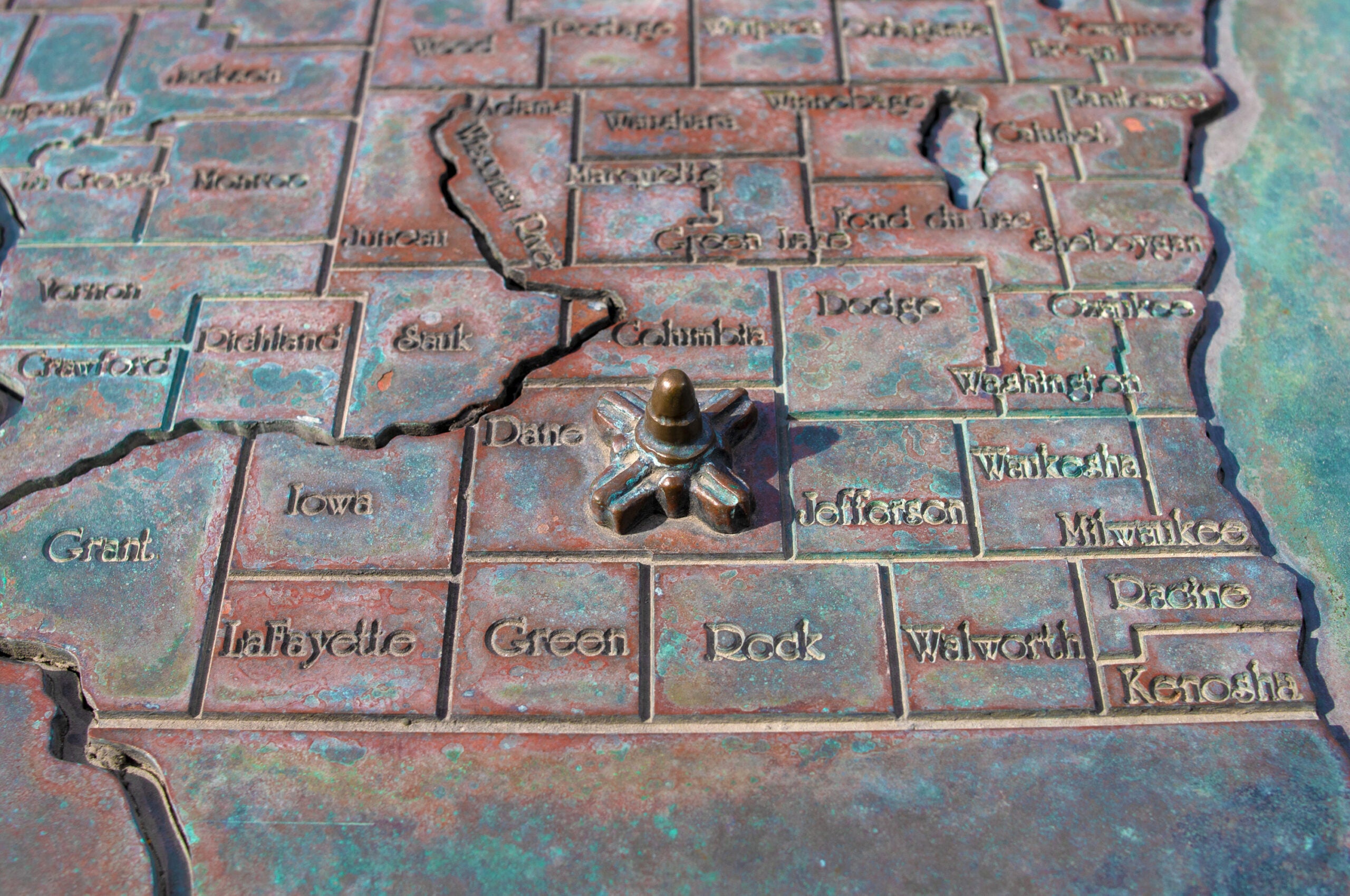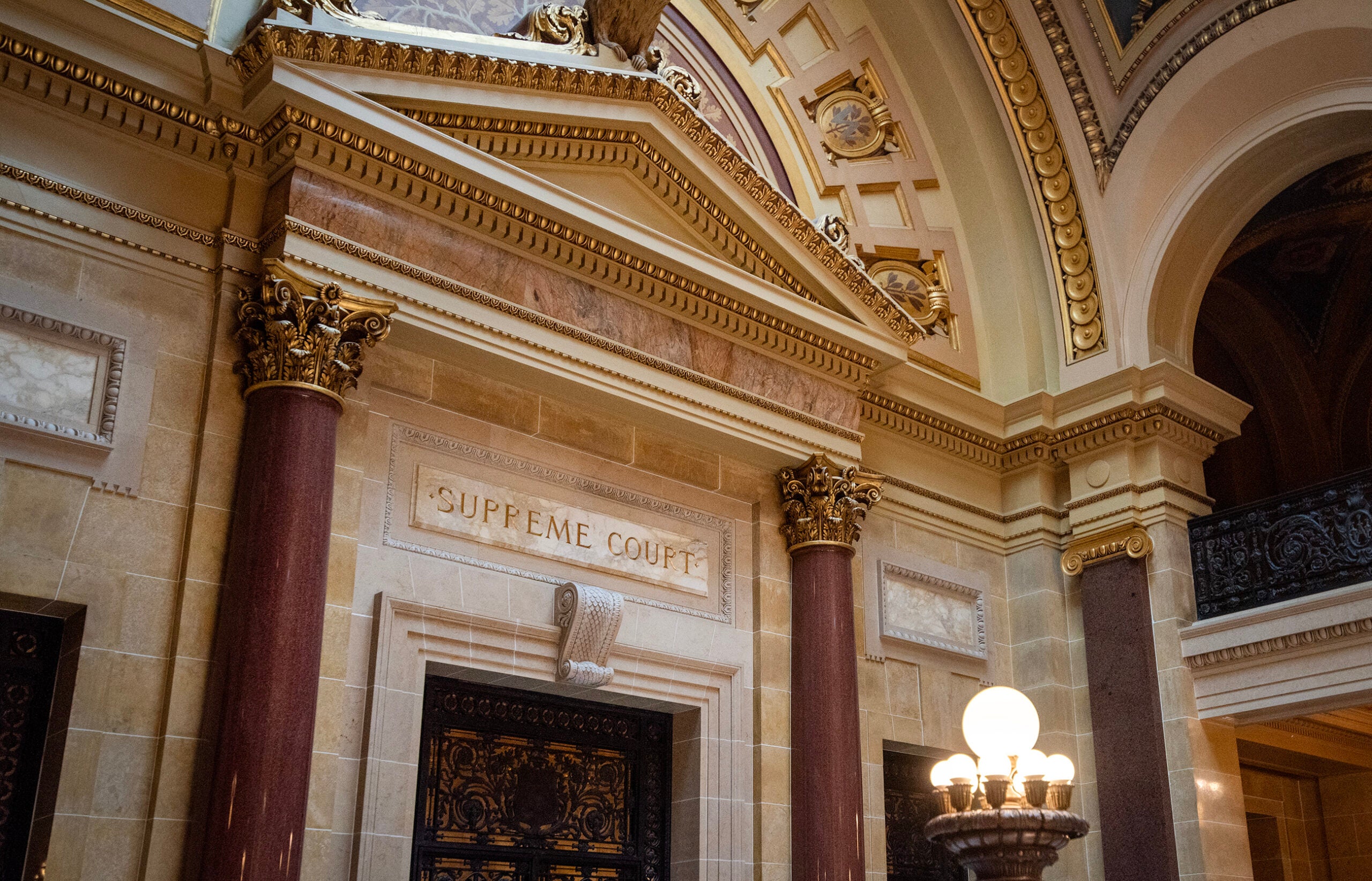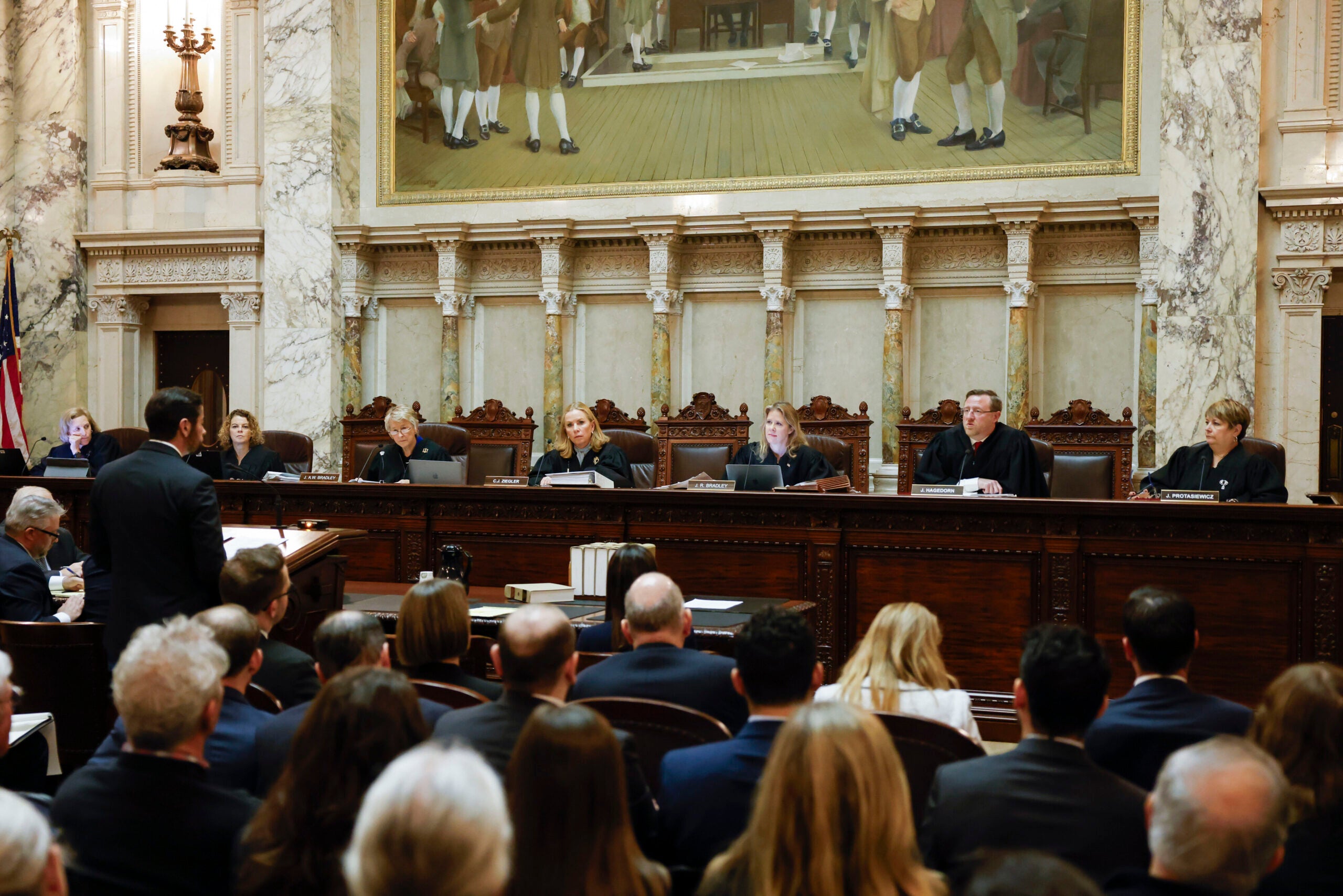The Wisconsin Supreme Court will be hearing a lawsuit on Nov. 21, 2023, against the state’s current Republican-drawn maps. The filers want new maps to be drawn by March 2024, which would force every state lawmaker to run for election.
Alex Crowe, host of WPR’s “Morning Edition,” chatted with WPR reporter Rich Kremer to clarify what the ruling could mean.
The interview has been edited for clarity.
News with a little more humanity
WPR’s “Wisconsin Today” newsletter keeps you connected to the state you love without feeling overwhelmed. No paywall. No agenda. No corporate filter.
Alex Crowe: What is redistricting, and what’s really at stake in this case?
Rich Kremer: Redistricting is a term that a lot of people have heard about, but maybe they don’t know the nuts and bolts of it. Essentially, we’re talking about the shape and size of districts for state Assembly, state Senate, etc.
The maps that we have right now, the lines were drawn by Republicans. Even though Wisconsin is known as a 50-50 state, there’s a two-thirds Republican majority in the state Legislature. So the lines go a long way in determining who gets elected.
AC: What exactly does this lawsuit hope to accomplish, then? Are they hoping to kind of just get rid of the districts that we know entirely?
RK: Yes. Democrats are filing the lawsuit. These are individual Democratic voters. They want the court to declare that the Republican maps are unconstitutional. They want to have the court order new elections for all 132 state lawmakers under new maps by next fall.
Typically, there are 99 Assembly seats and half of the state Senate seats up for election every two years. But because senators serve four-year terms, that would mean special elections for a lot of individuals, and then the regular cycle would get started again in 2026.
AC: There has to be a pretty solid argument if they’re going to take this drastic step. What exactly is the argument being made that the current maps are unconstitutional?
RK: Well, the lawsuit is asking the Supreme Court to decide whether or not the Republican maps violate two things in the state constitution.
One has to do with contiguity. That’s a complicated term for an idea that voting districts should all be within the same boundaries. Right now, 55 of Wisconsin’s 99 state Assembly districts in 21 of the 33 state’s Senate districts have non-contiguous, what they call, islands — essentially chunks of that district that are outside of the borders of the rest of it.
The other question is whether or not the GOP maps violate the constitution separation of powers clause. The petitioners are saying that because the Supreme Court chose maps drawn by the Republican-controlled Legislature that were vetoed by Gov. Evers, but never overridden by lawmakers, the court essentially usurped the legislative process.
AC: So there’s a couple of different arguments that are being made here. Are there a couple of different possible outcomes? Or is it basically just keep them as they are? Or get rid of all the maps and order new elections entirely?
RK: All of the above. I mean, who knows what will end up happening, but when the court’s liberal majority accepted the redistricting lawsuit, it asked all the parties in the case to guide them. They asked what the court should use in terms of guidelines when imposing a remedy for these alleged constitutional violations.
As I said before, petitioners want it all. They want new maps, they want new elections.
The Republicans state senators that are part of the lawsuit and the Legislature as a whole that is part of the lawsuit, they want the whole case dismissed. So they don’t want any change.
In past redistricting cases in Wisconsin and around the nation, courts have made some small adjustments. Sometimes, as it relates to, say, the Federal Voting Rights Act, courts can also make big changes.
AC: That’s still something that is a pretty likely outcome, right, with liberals now controlling the majority of the Supreme Court? So if they do rule in favor of new maps and, say, toss these out, where does that leave us? Could this go to the U.S. Supreme Court? Or will this be the final say?
RK: That is very hard to say. Assembly Speaker Vos has already said that the U.S. Supreme Court will have the last word on the redistricting lawsuit. The U.S. Supreme Court does get involved in these things sometimes. In 2021, the U.S. Supreme Court overturned the Wisconsin Supreme Court’s initial decision in a state redistricting case that generated the maps we have right now.
Arguments in this case are different than last time. Some legal experts that I’ve talked to have said that whether the U.S. Supreme Court will get involved or try to change anything at the state level is far from certain.
For more on the history of redistricting in Wisconsin and how it impacts political power in the state, check out WPR’s investigative podcast series, “WPR Reports: Mapped Out.”
Wisconsin Public Radio, © Copyright 2026, Board of Regents of the University of Wisconsin System and Wisconsin Educational Communications Board.



